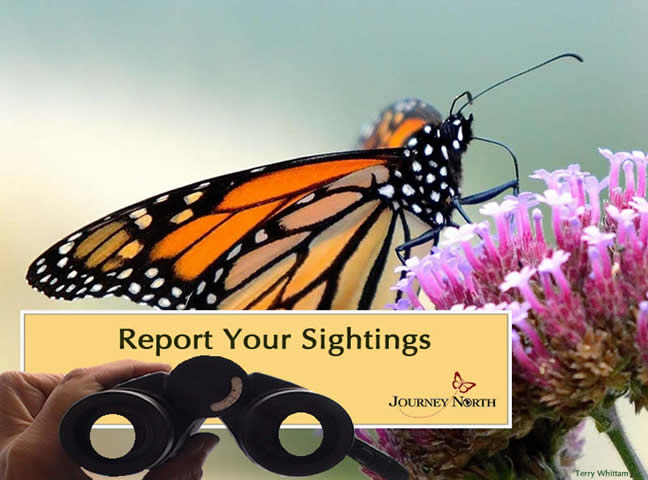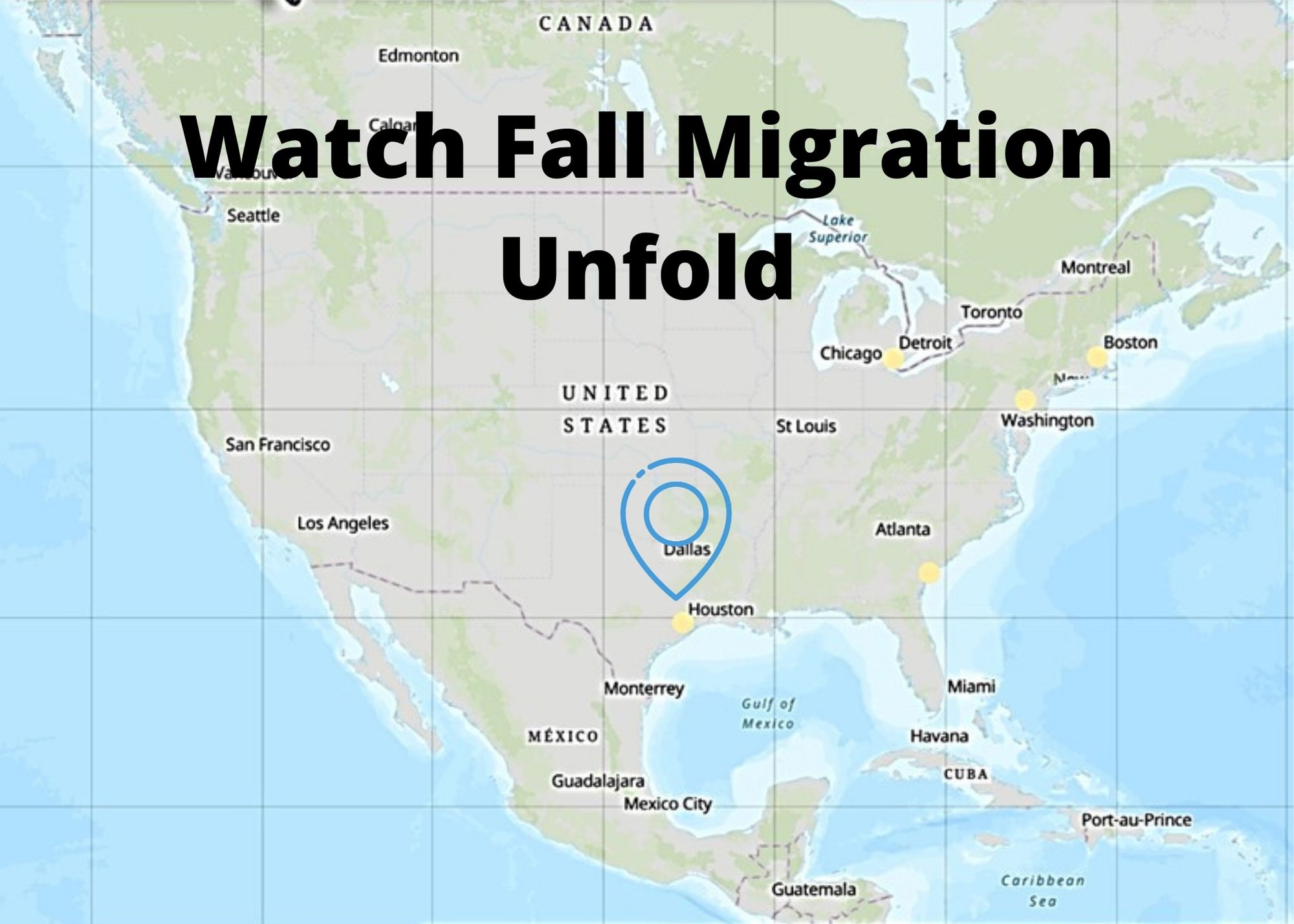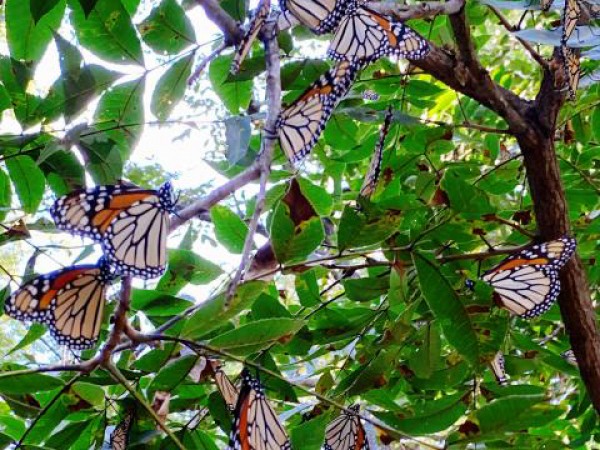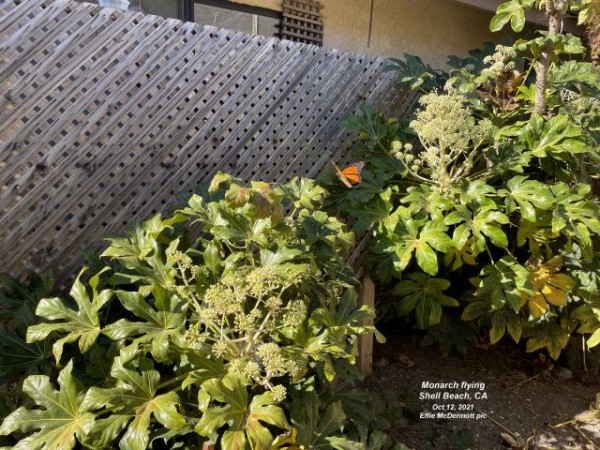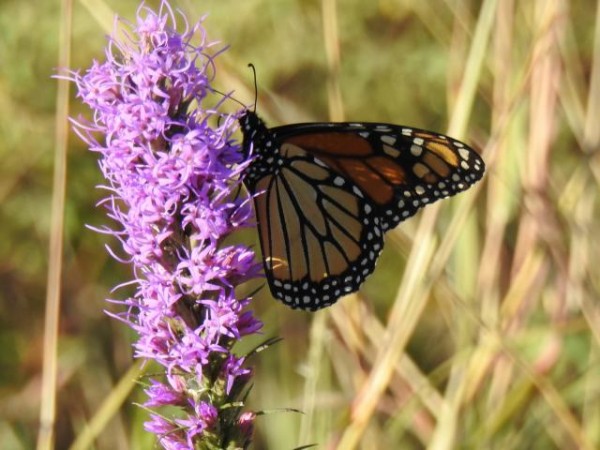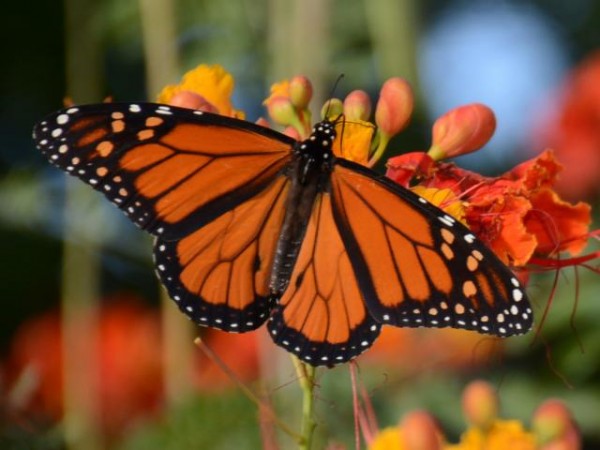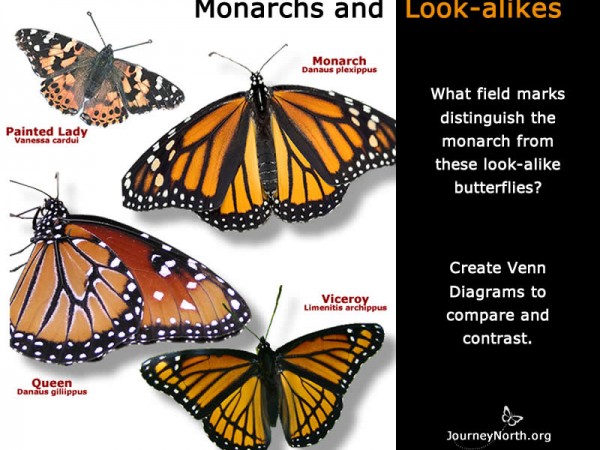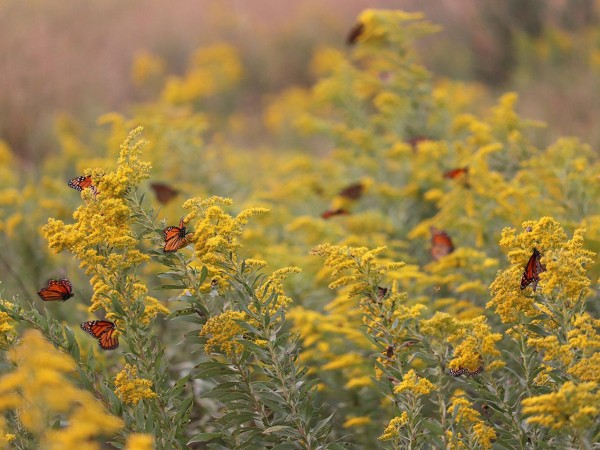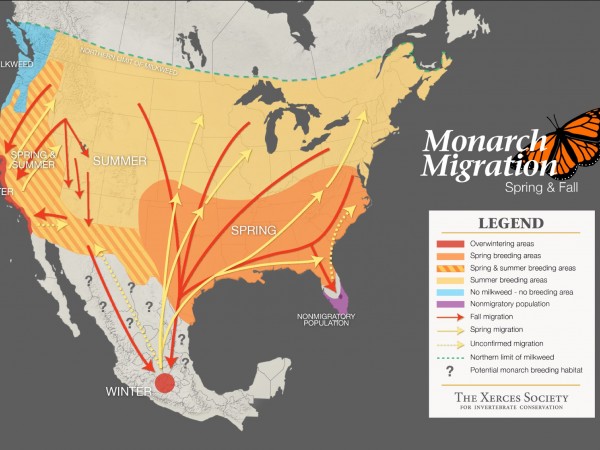Steady Progress
The Leading Edge of Migration
Fall migration is in full swing. Along the Central Flyway, Texas has become a hotspot of migratory activity. Peak migration events and fall roosts are being widely reported, and monarch numbers are growing. Thanks to Correo Real, additional reports of monarchs in Mexico are coming in. These numbers will only grow as the activity in Texas shifts south. And along the Eastern Flyway, reports are picking up in the Southeast.
Roberto Carlos Armendariz in Acuña, Coahuila de Zaragoza: "At 11:00 a.m. I saw 15 monarchs flying on a sunny day." (10/05/2021)
Jenny in Hext, TX: "There were south winds & very warm temperatures that kept the butterflies concentrated in pecan trees along the San Saba River for miles. We tagged 250 in an hour. The trees were dripping with butterflies!" (10/09/2021)
R in Eldorado, TX: "A large group of monarchs had been at the courthouse since October 5, 2021, growing in size from a few hundred to at least one to two thousand between the 5th and 11th." (10/11/2021)
Bob in Birmingham, AL: "Monarchs feeding on Tithonia." (10/12/2021)
Out West, more monarchs are being spotted in Arizona and close to overwintering grounds along the California Coast.
Michelle in Phoenix, AZ: "Monarch was nectaring on Asclepius subulata in my front yard." (10/11/2021)
Effie in Shell Beach, CA: "Monarch flying around the Aralia plants where most of mine have eclosed." (10/12/2021)
Eastern Monarch Population
Eastern Monarch Fall 2021 Report #5
Oklahoma and Texas saw an uptick in reports of fall roosts and peak migration events. Migration continued to build along the Eastern Flyway as more reports came in from the Mid-Atlantic and Southeast. Explore our PEAK Migration and Monarch Fall Roost maps to see how the Eastern Flyway often lags behind the Central Flyway in timing of migration. And Journey North citizen scientists in southern Ontario, the Midwest, and the Northeast still reported monarch activity, including roosting behavior and directional flight. With temperatures falling and daylight shortening, reports in these areas will continue to drop.
Read more of the Eastern Monarch Fall 2021 Report #5»
Western Monarch Population
Letter from Gail Morris: Western Monarch Fall 2021 Report #5
Migration sightings of multiple monarchs in the West are exciting, so take a few moments to absorb the phenomenon. Grab as many details as you can remember and consider adding them to your report. How many monarchs do you see? All at once or you can count monarchs flying overhead over a set time interval of your choice. If the monarchs are close enough to see, what is their wing condition? Are the wings fresh and new with vivid color or worn and tattered? Can you tell the gender? Do you see male and female monarchs feeding on flowers side by side? Did you experience a female monarch laying eggs or only nectaring? Do you see 3 or 4 monarchs (or more) roosting nearby each other in a tree as dusk approaches or in early morning while it is still cool? (Frequently they can be found on the Southeast side of a tree or shrub so they can quickly warm in the morning sun.) Or, did several monarchs spend the night right on a rabbitbrush or other shrub in flower? These are just a few of the ways you can describe what you are seeing this special time of year.
Read more of Gail Morris' Letter: Western Monarch Fall 2021 Report #5»
Watch for Monarch “Look–alikes” and Keep Reporting
Other butterfly species such as American snout, viceroy, queen and painted lady can resemble monarchs from a distance. Identification isn’t always easy – especially when butterflies are flying – so be sure to review what distinguishes monarchs from look–alikes.
If you’re still observing monarch activity, keep reporting! Your observations contribute to our collective understanding of monarch migration. And remember to keep your eyes peeled for monarchs a few weeks after your last sighting – stragglers may yet come through!


